Adapting Admitted Yield For A Virtual Era
Sure, the Super Bowl just passed, but if you’re like most admissions pros, you’re longing for our own big game: Admitted Students Day.
For most of us, ASD has always been the most critical day of the yield season. During those magical few hours, we’d welcome thousands of admitted students and their families on campus to razzle dazzle them and help them feel like they are truly a part of the campus community. Then—like clockwork—the deposits would start rolling in!
Though we’re optimistic about someday returning to those good old days, for now, things are different. Thanks to all the pandemic-related safety precautions, most of us cannot host a mass gathering anytime soon. Instead, we have to find multiple creative ways to help students make the same deep connections to your school and achieve the same enrollment results in a mostly virtual environment. To help you get started, here are several out-of-the box ideas that may help you get students excited to enroll at your institution.
1. Safer, Small Events

In the last year, admissions officers have learned how to develop incredibly successful virtual events—from visits, to info sessions, and more. However, Spark451’s original research shows that as many as 60% of students won’t make a decision to enroll without stepping foot on campus in person. So, if your local regulations allow, it would be wise to look for ways to complement those virtual events with smaller, in-person events so you can give certain students an in-person encounter in a relatively safe environment. For example, you may consider inviting 15 or 20 students to meet with select faculty members based on their academic interests, or create unique opportunities for students to connect with current students or hear from campus leadership. Think of it as an a la carte approach to ASD, and let families decide.
2. Seek Insights and Address Concerns in Real-Time
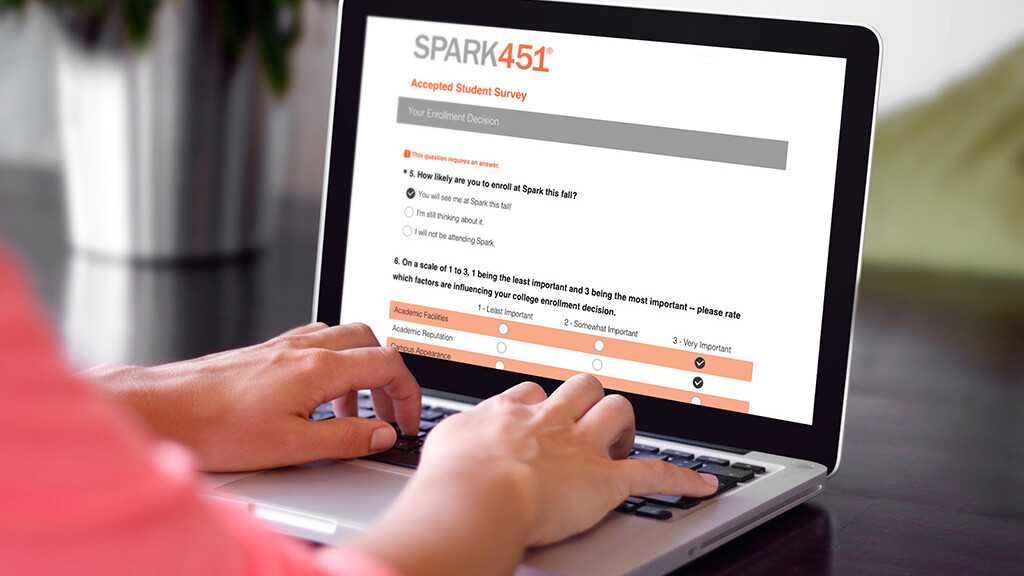
Even if you can’t be with students in person as much as you’d like, they still need to know that you’re always there to address their concerns. However, the distance can make it challenging to identify those concerns. Enter: the survey. This simple tool will allow you to quickly gather insights about which topics and issues are most interesting for individual students so you and your team can deliver personalized follow-up in a meaningful way.
We’d recommend sending one survey to admitted students, and another one to their parents, because each audience will likely have slightly different concerns. Based on the feedback, you might want to help a prospective student get in touch with a current student for more info about day-to-day life on campus, and you might find it makes the most sense to connect a parent with an advisor from the financial aid office.
You might even choose to survey guidance counselors as well, as a way of putting out feelers to see if they have students who could be a good fit for your institution.
3. Ramp Up Your Virtual Financial Aid Support

As you probably recall, the financial aid office was almost always the last group to shut down on Admitted Students Day. Their sessions were always packed, and they had lines of people waiting to connect with them after each one. If there’s one thing we can always count on, it’s that parents need help navigating the acronym-heavy world of FAFSA, CSS, EFC, ISR, and more.
In these uncertain times, it’s even more critical to help families understand the bottom line. Make sure to schedule a steady stream of virtual financial aid info sessions, Q&A sessions, and one-on-one meeting opportunities. Also, think about adding more easy-access resources to your website, such as informative videos and downloadable guides, so parents and students can access them whenever a question comes to mind.
4. Be Ever-Present

With so many parents juggling working from home, childcare, remote school, and more, it’s worth going above and beyond to make sure you’re there for them whenever they’re ready for you. Often, this will be outside of your regular business hours.
Since night and weekend events have never been more important, it may be worthwhile to get creative with how you schedule your team’s work time. For example, perhaps you can give your admissions counselors the option to take a day off in the middle of the week in exchange for running a live chat feature for admitted students in late evening hours. (When I say late, I mean like 11 p.m. to 1 a.m.—when parents finally get some time to think and those questions start bubbling up.) Thinking outside the box can help ensure you meet parents where they are, while also preventing burnout on your team.
5. Create a One-Stop-Shop Online
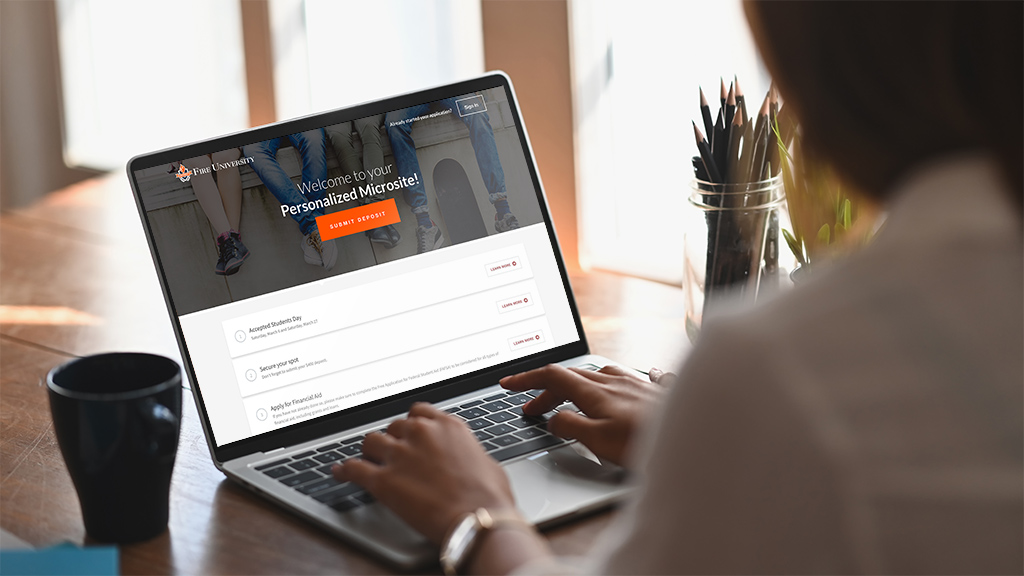
Even with the most creative scheduling tactics, it’s going to be hard to truly be there for prospective students 24/7, so it’s important to make sure that they can easily access critical resources online.
Create a one-stop-shop with everything they’ll need to know to enroll. Depending on your resources, you can either do this with a personalized microsite or by simply devoting a section of your school’s website. At the very least, be sure to include basic items like a checklist of next steps (enrollment deposit, FAFSA, orientation registration, housing and health forms, etc).
To deepen student engagement, take it a few steps further. Include residence hall room dimensions so students can start planning their packing lists. Add some content on dining hall favorites (“Don’t miss chicken parm Thursdays!”) so they can start picturing themselves on campus. Start developing team spirit by adding some game-day essentials, like the lyrics to your team’s fight song and victory song. You could even connect with your IT department to set up live cams across campus so students can get a true sense of campus life in the spring. The options are endless.
6. Boost Digital Engagement Opportunities
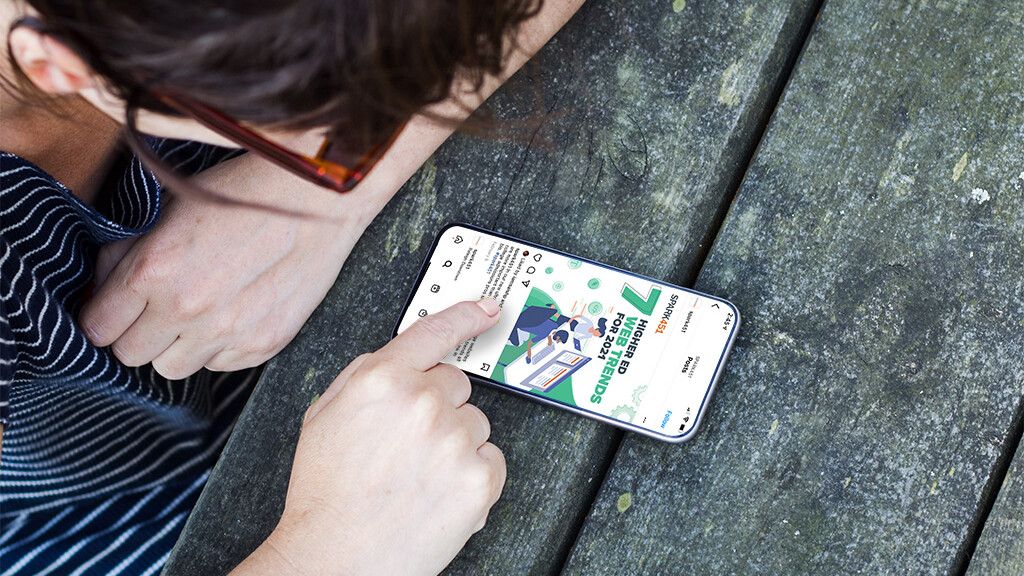
Social media is always a great way to reach students where they are. In addition to running paid campaigns designed to boost engagement among your admitted student pool, you should also make an extra effort to post organic content that will encourage them to pay attention. Try asking your admissions counselors or tour guides to share some anecdotes or interesting campus shots to liven up your posts.
Pay special attention to platforms such as Instagram, Snapchat, and TikTok. All three make it possible to share interesting animated content that students can comfortably explore in a non-invasive manner, as the posts won’t necessarily require a specific call to action. Think of these posts as a way to enhance overall brand awareness of your institution in a positive, controlled way.
7. Swag with a Purpose
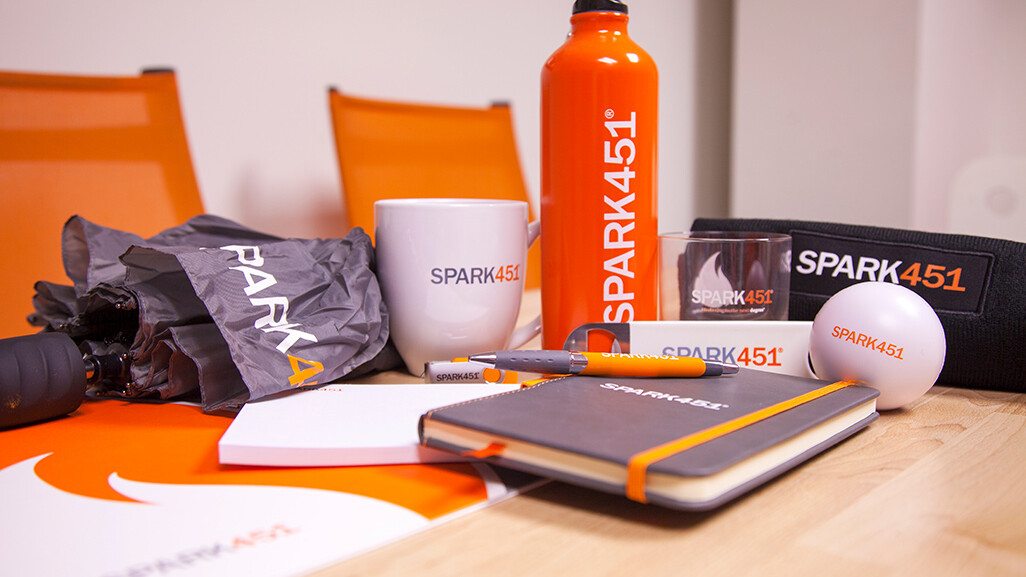
Who doesn’t love a freebie? Since you’re no longer spending money on large campus events, spring recruitment travel, and other traditional yield expenses, consider repurposing some of that budget to develop some promo items that can help foster stronger connections to your school. For example, a celebratory yard sign can be a great way to help make a student and their family feel special, and it gives them a fun way to share their big college decision news with their friends and neighbors!
Final Thoughts
It’s important to remember that all of these efforts are best complemented by a strong admitted yield communications program, with targeted messaging designed to strengthen affinity and nurture students through the process from acceptance to enrollment.
I hope these suggestions have helped to spark some creative ideas of your own. If you need additional help planning out the rest of your yield season, please don’t hesitate to reach out. My colleagues and I are always here to help you determine the best tactics for your institution. We’re rooting for you!
Higher Ed Web Trends for 2021
The web has long been the number one resource for students seeking information about a college. In 2020, this fact became more pronounced than ever, with students compelled to use the web to replace in-person visits, information sessions, and general fact gathering in their college search processes. The web took center stage as the virtual home for admissions.
As Spark451’s design group, we constantly reflect upon the essentials for successful university websites that are prospective-student focused. There is so much to consider when managing a website, and you can’t skimp on anything. From responsive design to SEO, and content strategy to accessibility, it all matters. As the COVID-19 pandemic hit, colleges and universities were forced to think differently about how they engage with prospective and current students in the digital space. It is in this spirit that we are offering this overview of key higher ed web trends you should be aware of in 2021. Our aim is to prepare you for the unexpected, and to help ensure that users anywhere and of any background can rely on you to give them the information they need to make a great college choice.
Trend 1
Drag-and-Drop Builders
Across the web, more visual and intuitive ways of creating content have become increasingly popular. With the WordPress 5.0 release in early 2019 came a block editor called Gutenberg that completely changed the website editor experience. The technology was slow to be adopted, but in 2020, it went mainstream with a new release and a more robust library of components. Thanks to this drag-and-drop page builder, the building experience is more user-friendly than ever. It offers content managers the opportunity to build their websites without expert knowledge of coding. A version of Gutenberg was also ported to Drupal to compete with the native (and less flexible) Layout Builder within Drupal 8.
How does Gutenberg work? All the content is divided up into individual “blocks.” Gutenberg has many different types of blocks, such as headers, quotes, lists, galleries, and so on. Add-ons like ACF Blocks Suite offer a comprehensive collection of ready-to-use Gutenberg Blocks to help you make a beautiful website.
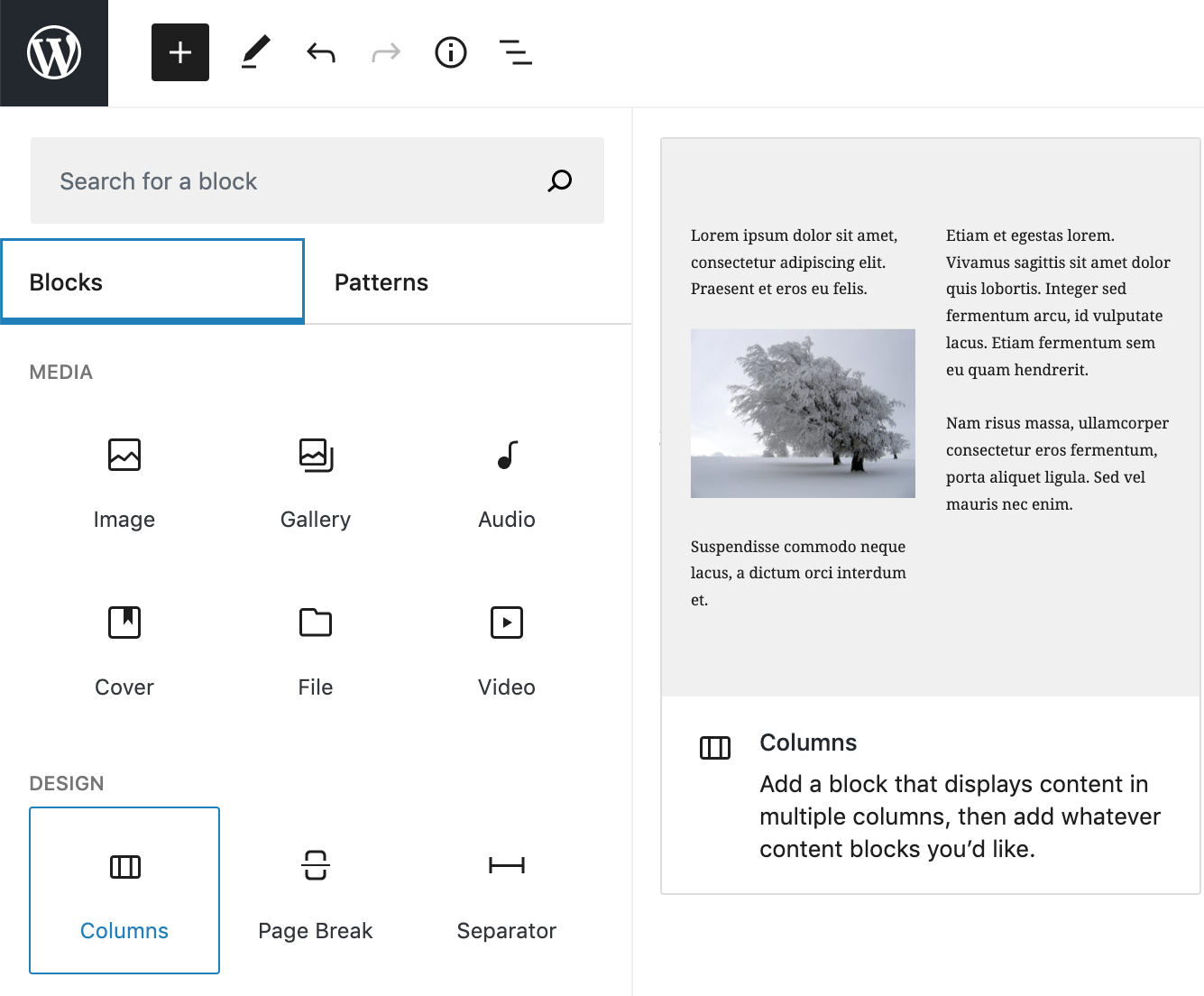
When you’re faced with unexpected changes or having to add completely new sections of content, a drag-and-drop builder is an easy, visual solution to get your pages up and running in no time. And while we won’t be getting rid of field-based content management any time soon, drag-and-drop builders let us create media-rich landing pages with speed and ease.
Trend 2
Content Is Still King
Users come to your site for a reason: the content! And when it comes to managing that content, you need a strategy. In the COVID era, we shifted our focus to bring events online and create compelling content for live interaction. Many of us even became broadcasters for the first time, mixing live video streams with slides and films into our Zoom meetings and webinars to get our messages across. And if you haven’t done that, you certainly will need to for the better part of 2021.
Another major content trend for the year ahead is the repurposing of existing video content to create new interpretations for shorter snippets and social stories.
And of course, many of you discovered that your site wasn’t as easy to use as it could be, so you had to rewrite and reconfigure your admissions section to be more usable and reader-friendly. (We often use tools like the Hemingway Editor to write more accessible, readable copy that aligns with a ninth-grade reading level.)
Finally, web personalization is becoming even more important in 2021 as students look for colleges that have their needs and interests in mind. We build personalized microsites to help admissions offices build even greater connections to students.
Trend 3
The Need for Speed
In many ways, web design is a balancing act. You want to have beautiful pages with compelling video, breathtaking images, and sophisticated typography, but you also need to ensure the pages load quickly.
In mid-2018, Google began to roll out a “speed ranking” for both mobile and desktop searches. In essence, if your pages were not fast, your page would not rank high on Google searches. This is an existential threat for colleges that rely on Google for up to 80% of their inbound traffic. (To check your site’s speed, go ahead and fire up the Google Lighthouse tools.)
Of course, prioritizing speed isn’t just about Google rankings. If your page doesn’t load quickly, the viewer will act fast and move on. The average human attention span dropped from 12 seconds to eight seconds in 2018, so we have to keep those load times short!
12 SECONDS
The average attention span of a human in 2000
8 SECONDS
The average attention span of a human NOW
Erik Runyon of Notre Dame did us the favor of analyzing the fastest home pages in higher ed. How does your site stack up?
Trend 4
Design Innovation
Web designers are always innovating, bringing novel content structures and components to your pages to elevate the experience for prospective students. Here are a couple we think are important for 2021:
Parallax Scroll Animations – These keep your page dynamic, layered, and engaging, and they’re so simple! Nobody wants to read a wall of text, so mixing in some images helps divide up content and provides some visual interest.
Secondary Navigation: Menu Takeover – Less is more, as they say. The less “clutter” you see in your primary navigation, the better. This menu takeover gives you the opportunity to decrease primary navigation clutter and create an engaging, interactive navigation experience.
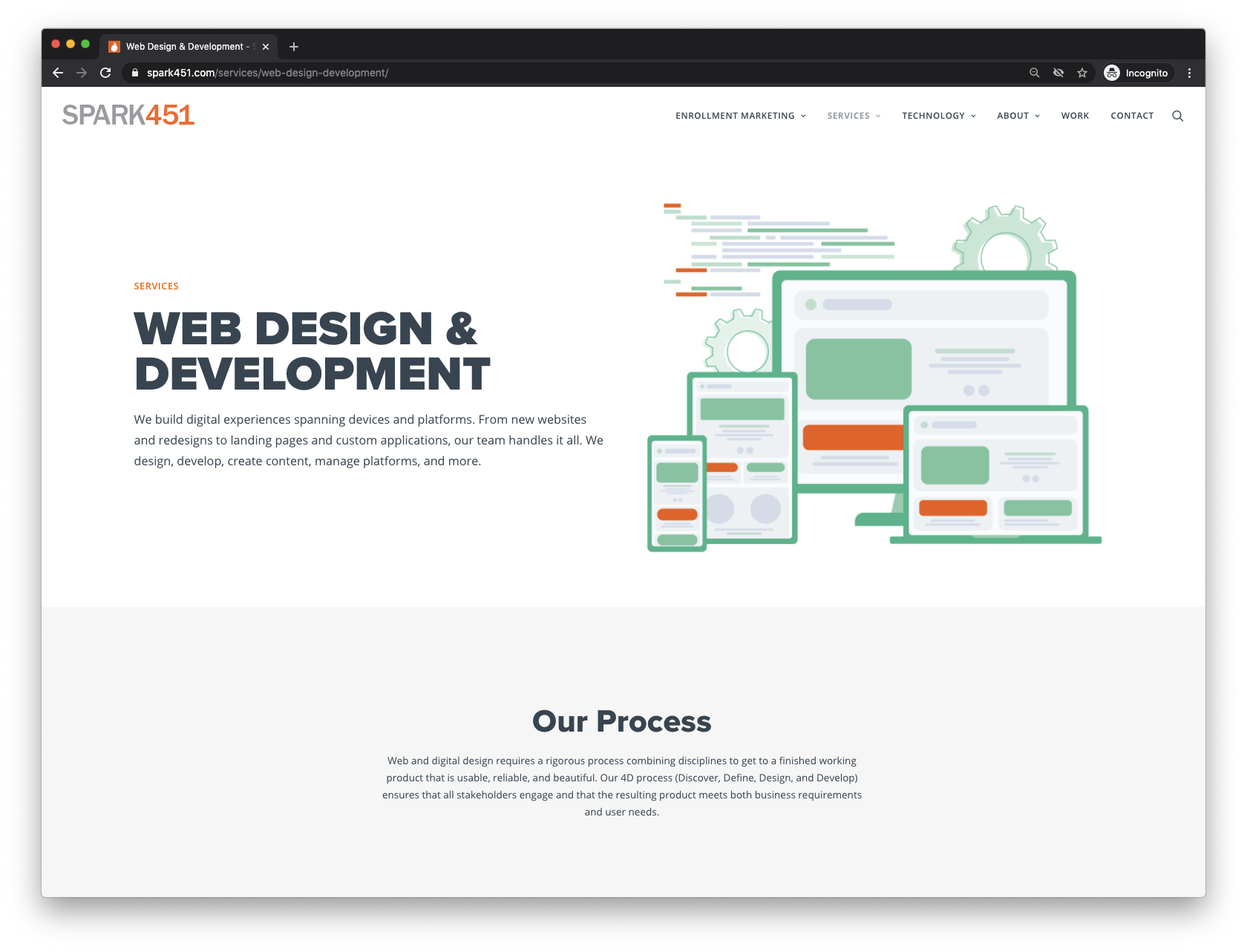
Negative Space Is Actually Positive – OK, this isn’t really new, but it’s worth repeating. Adding negative space to your designs highlights your newly finessed content so that it is easier to read and understand.
Trend 5
SEO Awareness
If you build an amazing website, but its content doesn’t show up on search engines for important keywords, does it really exist? How can I show up for searches that don’t include my college’s name? These are the questions you will need to answer in 2021, as competition heats up to capture the attention of people who are searching online for undergraduate and graduate education opportunities.
SEO is yet another example of the web design balancing act. We want to give our writers the freedom to use their talents to best express our spirit and quality, but we also have to ensure that what they write can also be appreciated by Google’s web crawlers and machine learning algorithms. It starts with “technical SEO,” which means getting everything right in our code—from semantic elements to proper meta data structure—and extends into the content manager’s domain.
Keyword research helps us understand the words we need to target, and comprehensive knowledge of web standards helps us use those keywords with the proper emphasis for the search engines. (For example, be sure to use your most important keyword in the <title> tags and <h1> tags.) SEO is an expert’s game that can be learned, and we are here to help for those in need.
Trend 6
Power to the Pixels: Conversions, Retargeting, and Tracking
With recruitment and registering online becoming the norm, the ways in which we keep track of those interested users must change. You want to know when someone visits your website and how they interact with it. Maybe they’re interested in learning about your institution or the nursing degree you’re well known for, or perhaps they came to learn about an event you’re hosting that was shared on social media. In these cases, you want to be able to follow up with those visits and clicks to make sure users are getting the information they need and seeing what makes your institution stand out from the rest. That’s where pixels come in.
A pixel is a tiny, invisible digital marker that is placed on your website in order to keep track of a user’s movements throughout. Not only can it tell you how they got to your site in the first place, but it can tell you:
- The time of day they visited your website
- Their locations
- New or recurring visits
- What browser they used
- The type of device they used (desktop or mobile)
- And more…
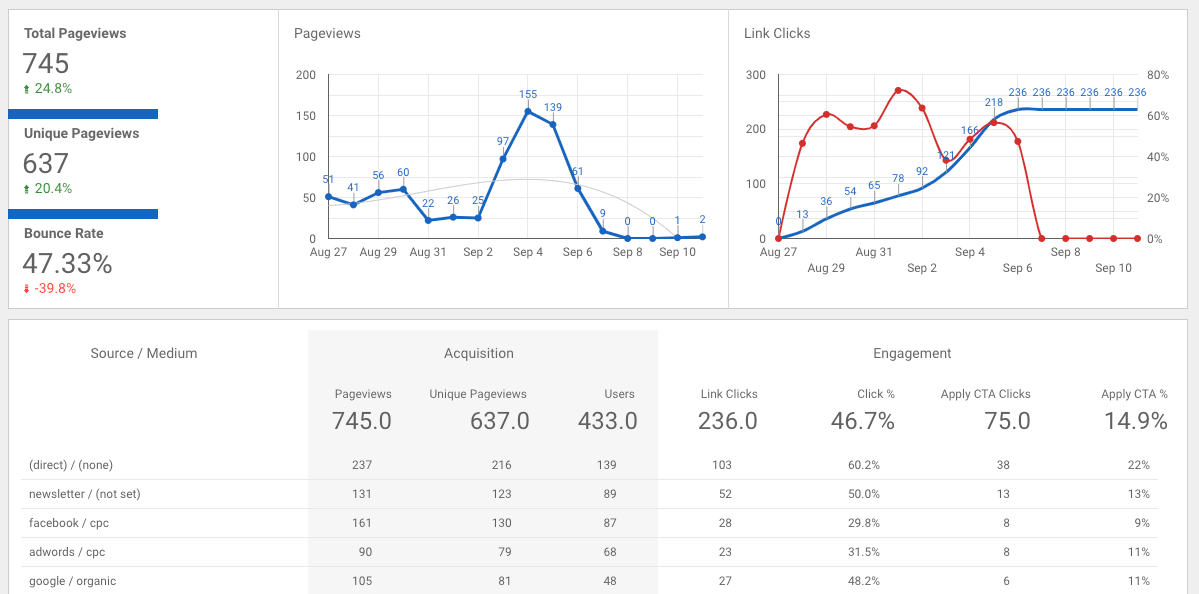
With this type of information, you can learn more about what your users are interested in and make smarter marketing decisions. Ultimately, you’ll take these learnings to optimize your digital ad spending so you can avoid focusing on ineffective marketing campaigns.
Trend Imperative 7
Accessibility
We anchor this blog post with the topics of accessibility because, without it, nothing else matters. It is not a trend, per se, but a responsibility and, doggone it, it’s the right thing to do! Equity and access are part of our national discussion on higher education and those ideas reflect the foundational values of our colleges and universities. Everyone belongs on our campuses, and everyone deserves to be able to access our content. Of course, these values are codified into law in Section 508 of Rehabilitation Act, which states that any entity that receives funding from the federal or state government must meet WCAG 2.0 AA accessibility standards.
According to w3.org, “web accessibility means that websites, tools, and technologies are designed and developed so that people with disabilities can use them.” Many colleges have been slow on the uptake of accessibility, but are catching up in 2021 and beyond. Part of the reason accessibility has been tough for designers is that it requires some tradeoffs that may be difficult to follow. For example, some schools have had to use a different shade of their school colors to increase contrast (for color-blind readers), or cut back their use of JavaScript widgets that just can’t be navigated through voice.
At Spark451, we have redoubled our efforts in accessibility, standardizing our approach around the Axe Accessibility testing tools, and adding screen readers and keyboard navigation to our testing process.
In Closing
2020 was a disaster in many respects, but certainly not for higher ed websites, which stepped into the spotlight as the indispensable tools that they are. We wish you the best of luck in using your website to serve your student populations in realizing their higher education goals. And if you should find yourself in need of a web design partner, you know where to find us.
Webinar: Understanding Your Institution’s Whole Brand
If you’ve ever wished you had a better way to uncover and analyze everything that’s said about your institution when you’re not around, check out our latest webinar.
Together with our new partner, Feedback (an ethnographic research agency), we discuss:
- How the intersection of persona modeling with ethnographic research and “social listening” provides a more holistic approach to marketing
- How to identify and analyze brand perceptions
- How to understand whole-community behavior
- How your target audiences make decisions
- And more!


